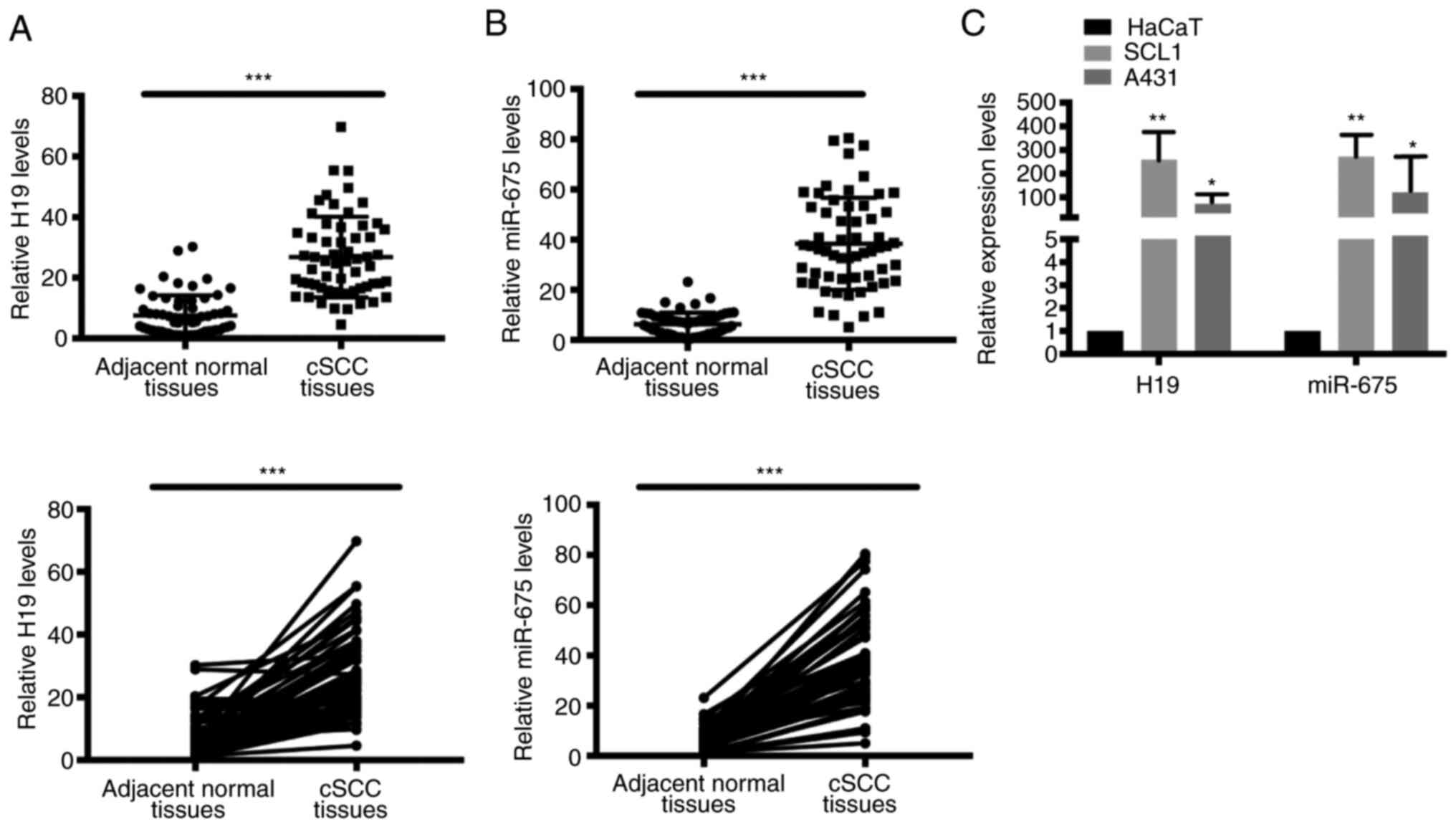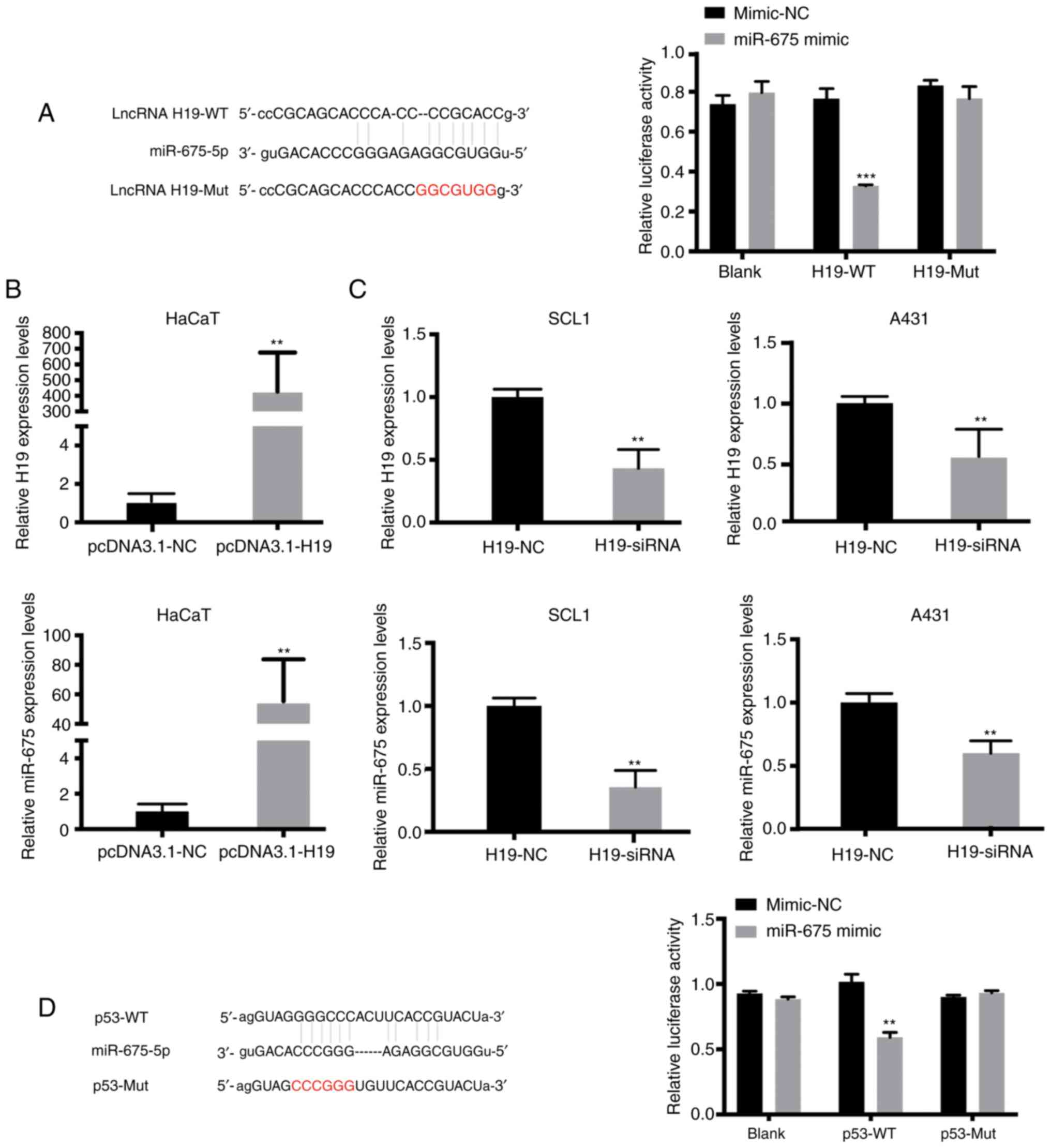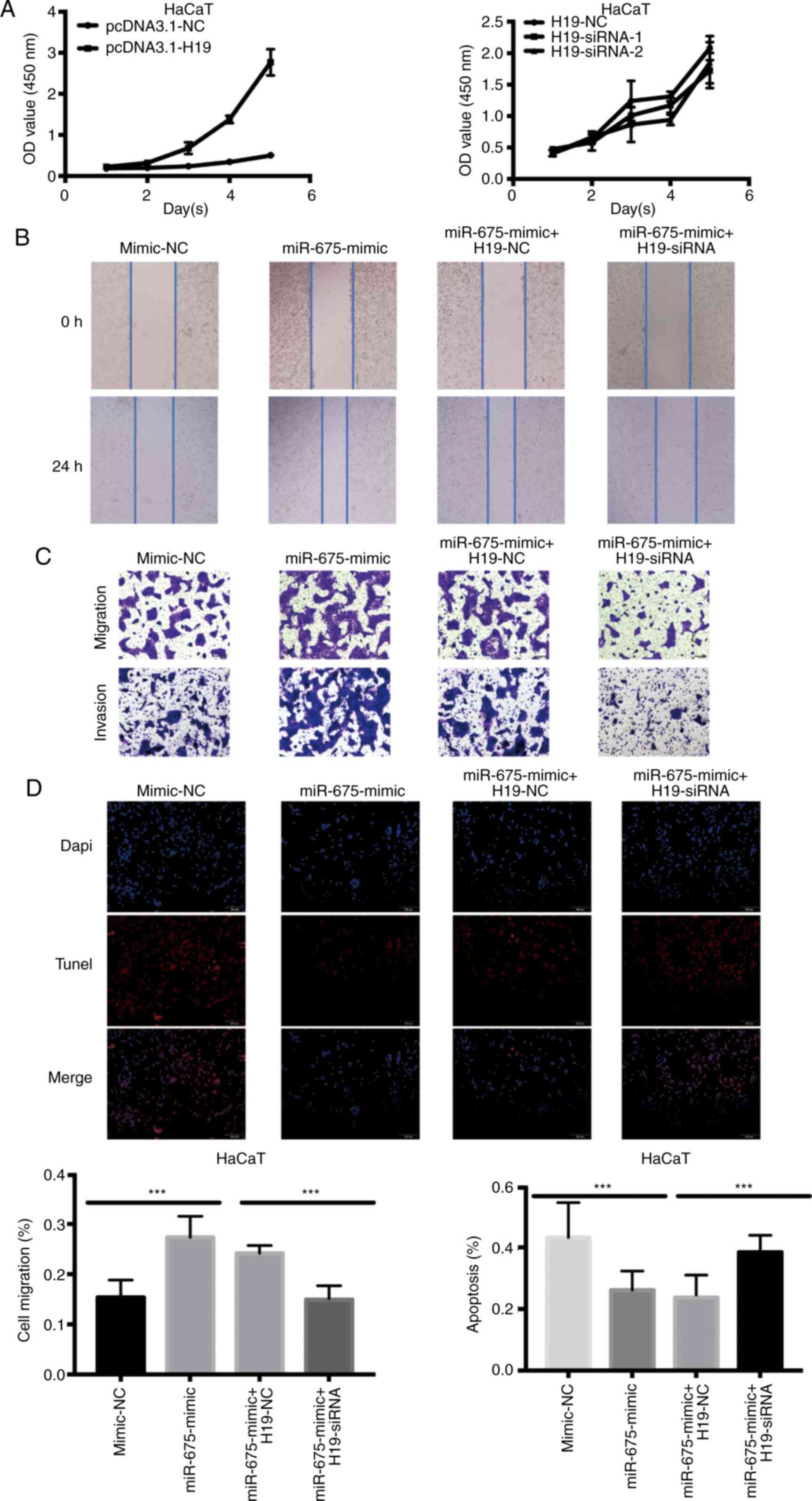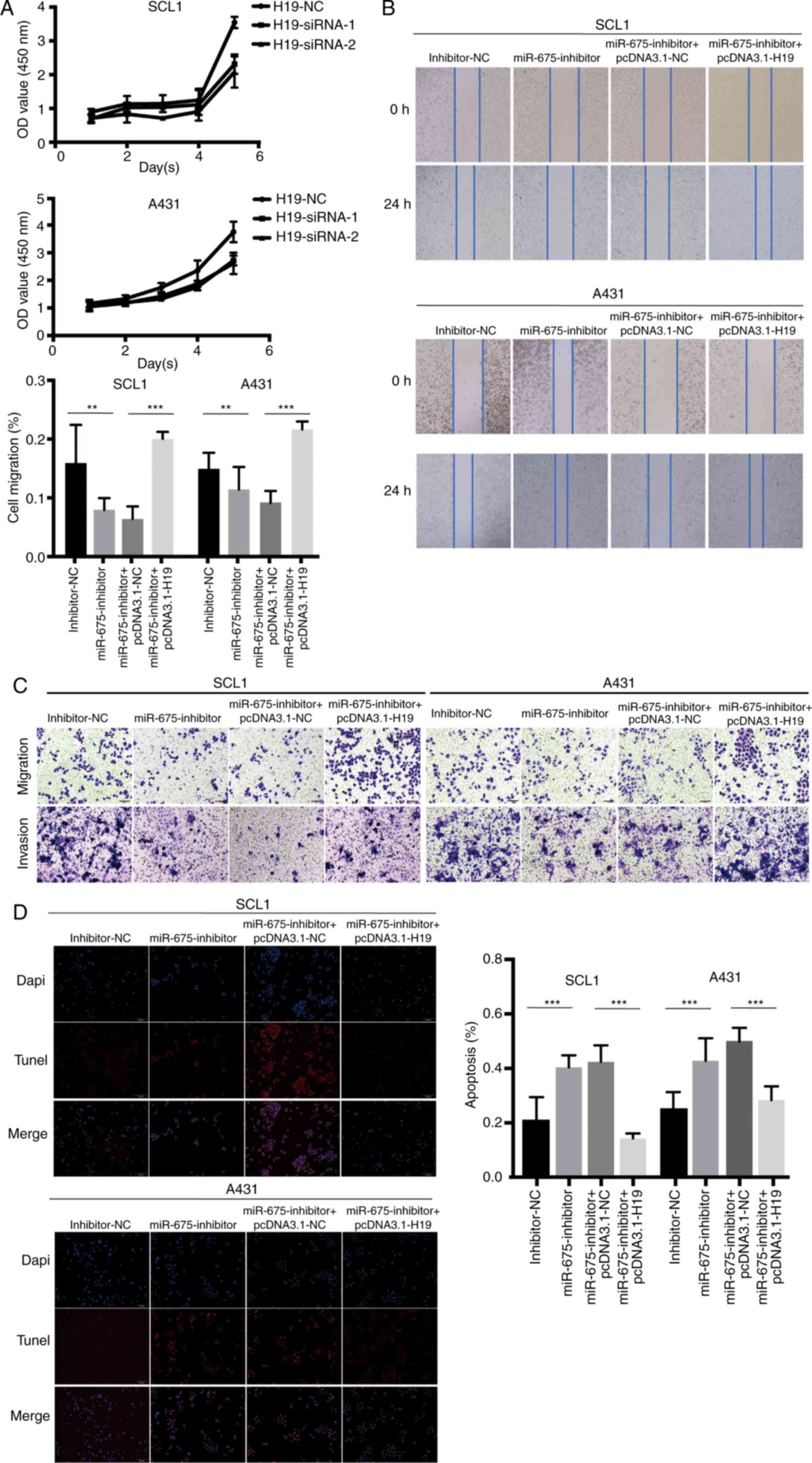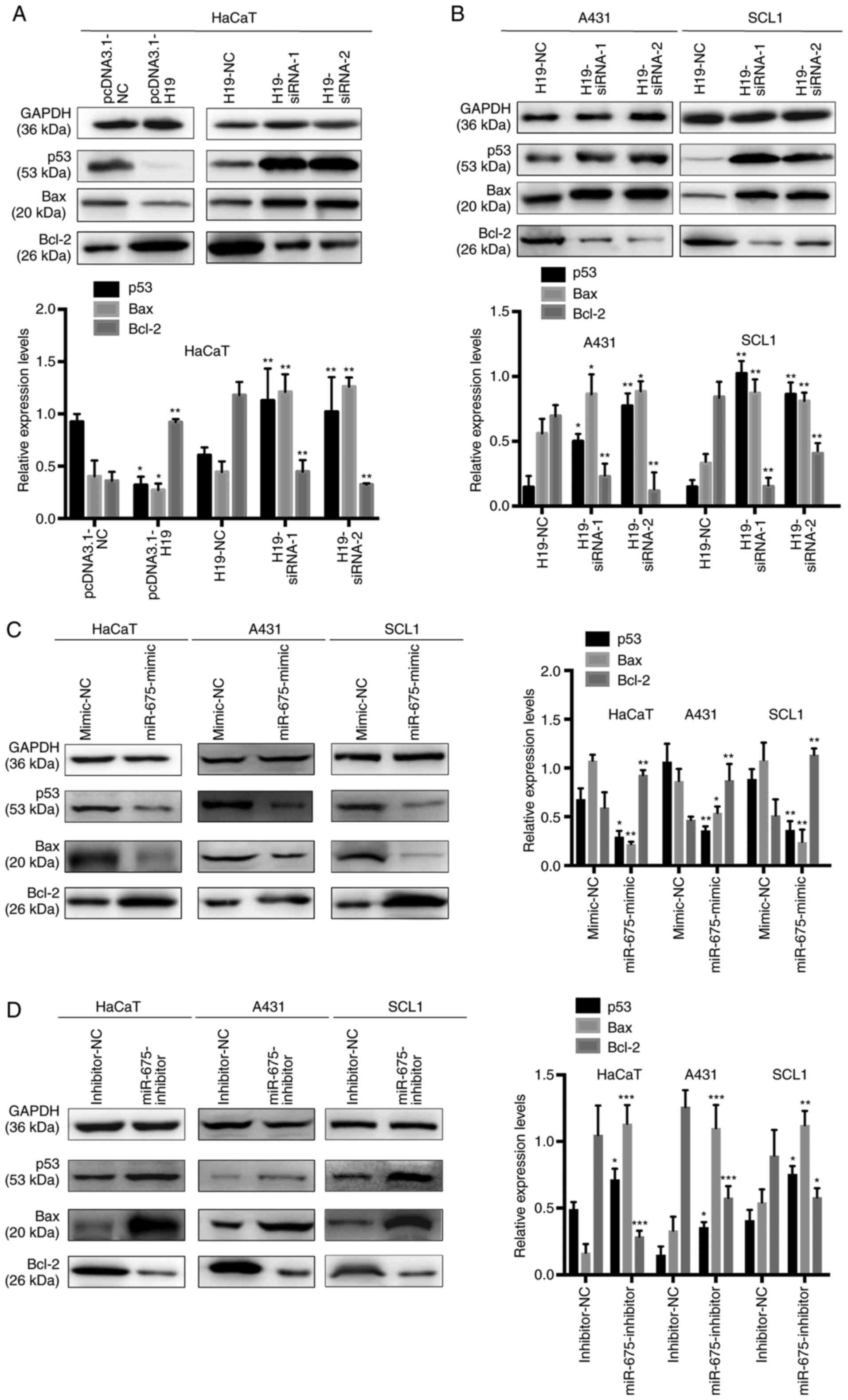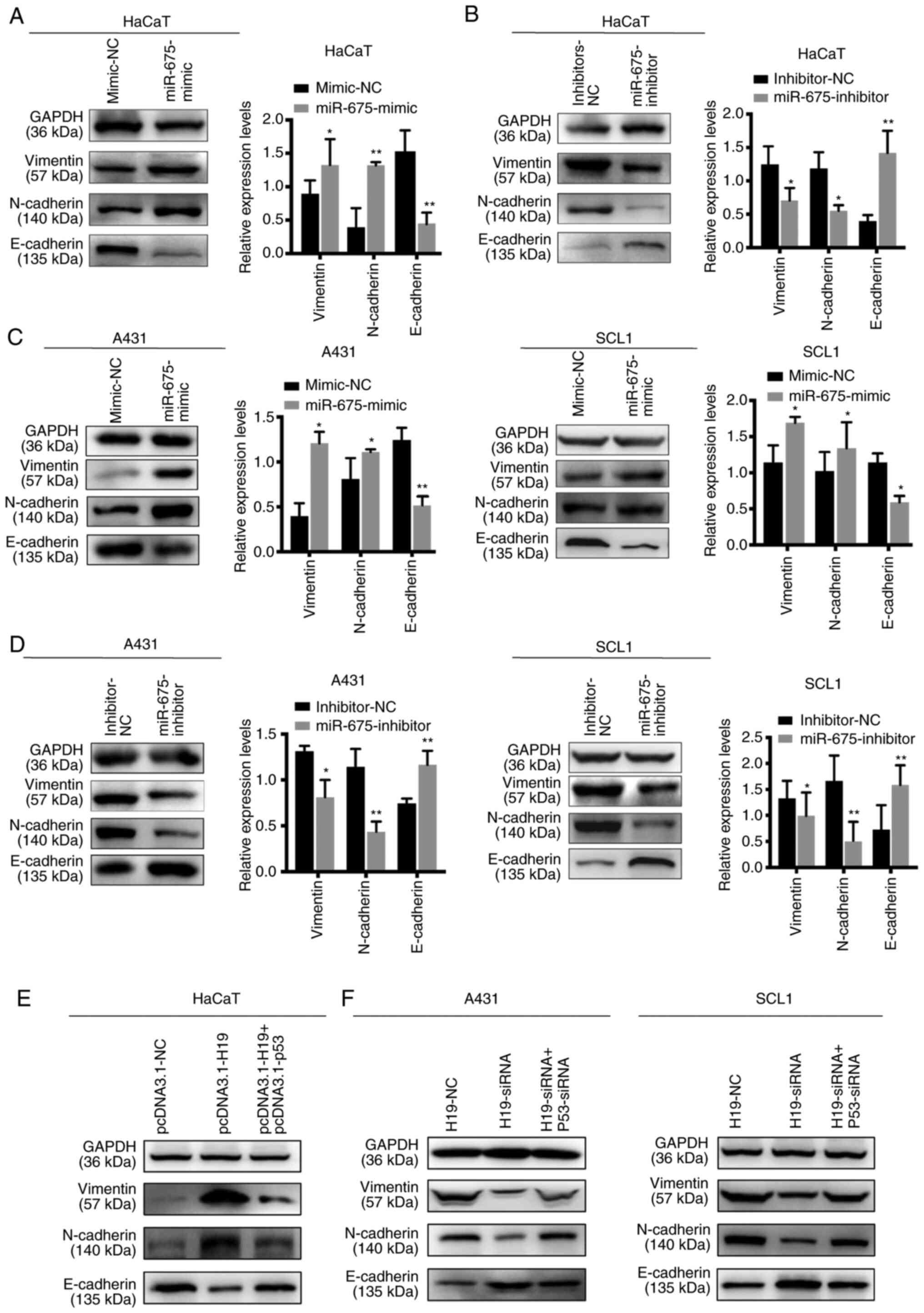|
1
|
Motaparthi K, Kapil JP and Velazquez EF:
Cutaneous squamous cell carcinoma: Review of the eighth edition of
the American Joint Committee on Cancer staging guidelines,
prognostic factors, and histopathologic variants. Adv Anat Pathol.
24:171–194. 2017. View Article : Google Scholar : PubMed/NCBI
|
|
2
|
Ackerman AB and Mones JM: Solar (actinic)
keratosis is squamous cell carcinoma. Br J Dermatol. 155:9–22.
2006. View Article : Google Scholar : PubMed/NCBI
|
|
3
|
Koike Y, Yozaki M, Kuwatsuka Y and Utani
A: Epithelial-mesenchymal transition in Bowen's disease when
arising de novo and acquiring invasive capacity. J Dermatol.
45:748–750. 2018. View Article : Google Scholar : PubMed/NCBI
|
|
4
|
Ishitsuka Y, Kawachi Y, Taguchi S,
Maruyama H, Nakamura Y, Fujisawa Y, Furuta J, Nakamura Y, Ishii Y
and Otsuka F: Pituitary tumor-transforming gene 1 as a
proliferation marker lacking prognostic value in cutaneous squamous
cell carcinoma. Exp Dermatol. 22:318–322. 2013. View Article : Google Scholar : PubMed/NCBI
|
|
5
|
Graindorge S, Cognat V, Johann To Berens
P, Mutterer J and Molinier J: Photodamage repair pathways
contribute to the accurate maintenance of the DNA methylome
landscape upon UV exposure. PLoS Genet. 15:e10084762019. View Article : Google Scholar : PubMed/NCBI
|
|
6
|
Fernandez Figueras MT: From actinic
keratosis to squamous cell carcinoma: Pathophysiology revisited. J
Eur Acad Dermatol Venereol. 31 (Suppl 2):S5–S7. 2017. View Article : Google Scholar
|
|
7
|
Lobl M, Grinnell M, Phillips A, Abels J
and Wysong A: The correlation between immunohistochemistry findings
and metastasis in squamous cell carcinoma: A review. Dermatol Surg.
Nov 3–2020.(Epub ahead of print). doi:
10.1097/DSS.0000000000002850. View Article : Google Scholar : PubMed/NCBI
|
|
8
|
Tian K, Liu W, Zhang J, Fan X, Liu J, Zhao
N, Yao C and Miao G: MicroRNA-125b exerts antitumor functions in
cutaneous squamous cell carcinoma by targeting the STAT3 pathway.
Cell Mol Biol Lett. 25:122020. View Article : Google Scholar : PubMed/NCBI
|
|
9
|
Cerk S, Schwarzenbacher D, Adiprasito JB,
Stotz M, Hutterer GC, Gerger A, Ling H, Calin GA and Pichler M:
Current status of long non-coding RNAs in human breast cancer. Int
J Mol Sci. 17:14852016. View Article : Google Scholar
|
|
10
|
Hao S, Yao L, Huang J, He H, Yang F, Di Y,
Jin C and Fu D: Genome-wide analysis identified a number of
dysregulated long noncoding RNA (lncRNA) in human pancreatic ductal
adenocarcinoma. Technol Cancer Res Treat. 17:15330346177484292018.
View Article : Google Scholar : PubMed/NCBI
|
|
11
|
Ponzio G, Rezzonico R, Bourget I, Allan R,
Nottet N, Popa A, Magnone V, Rios G, Mari B and Barbry P: A new
long noncoding RNA (lncRNA) is induced in cutaneous squamous cell
carcinoma and down-regulates several anticancer and cell
differentiation genes in mouse. J Biol Chem. 292:12483–12495. 2017.
View Article : Google Scholar : PubMed/NCBI
|
|
12
|
Pachnis V, Belayew A and Tilghman SM:
Locus unlinked to alpha-fetoprotein under the control of the murine
raf and Rif genes. Proc Natl Acad Sci USA. 81:5523–5527. 1984.
View Article : Google Scholar : PubMed/NCBI
|
|
13
|
Zhou W, Ye XL, Xu J, Cao MG, Fang ZY, Li
LY, Guan GH, Liu Q, Qian YH and Xie D: The lncRNA H19 mediates
breast cancer cell plasticity during EMT and MET plasticity by
differentially sponging miR-200b/c and let-7b. Sci Signal.
10:eaak95572017. View Article : Google Scholar : PubMed/NCBI
|
|
14
|
Wu J, Qin Y, Li B, He WZ and Sun ZL:
Hypomethylated and hypermethylated profiles of H19DMR are
associated with the aberrant imprinting of IGF2 and H19 in human
hepatocellular carcinoma. Genomics. 91:443–450. 2008. View Article : Google Scholar : PubMed/NCBI
|
|
15
|
Li X, Li Q, Jin X, Guo H and Li Y: Long
non-coding RNA H19 knockdown inhibits the cell viability and
promotes apoptosis of thyroid cancer cells through regulating the
PI3K/AKT pathway. Exp Ther Med. 18:1863–1869. 2019.PubMed/NCBI
|
|
16
|
Ghafouri-Fard S, Esmaeili M and Taheri M:
H19 lncRNA: Roles in tumorigenesis. Biomed Pharmacother.
123:1097742020. View Article : Google Scholar : PubMed/NCBI
|
|
17
|
Wang WT, Ye H, Wei PP, Han BW, He B, Chen
ZH and Chen YQ: LncRNAs H19 and HULC, activated by oxidative
stress, promote cell migration and invasion in cholangiocarcinoma
through a ceRNA manner. J Hematol Oncol. 9:1172016. View Article : Google Scholar : PubMed/NCBI
|
|
18
|
Yang Q, Wang X, Tang C, Chen X and He J:
H19 promotes the migration and invasion of colon cancer by sponging
miR-138 to upregulate the expression of HMGA1. Int J Oncol.
50:1801–1809. 2017. View Article : Google Scholar : PubMed/NCBI
|
|
19
|
Shi G, Li H, Gao F and Tan Q: lncRNA H19
predicts poor prognosis in patients with melanoma and regulates
cell growth, invasion, migration and epithelial-mesenchymal
transition in melanoma cells. Onco Targets Ther. 11:3583–3595.
2018. View Article : Google Scholar : PubMed/NCBI
|
|
20
|
Cai X and Cullen BR: The imprinted H19
noncoding RNA is a primary microRNA precursor. RNA. 13:313–316.
2007. View Article : Google Scholar : PubMed/NCBI
|
|
21
|
Simons M and Raposo G: Exosomes-vesicular
carriers for intercellular communication. Curr Opin Cell Biol.
21:575–581. 2009. View Article : Google Scholar : PubMed/NCBI
|
|
22
|
Kim NH, Lee CH and Lee AY: H19 RNA
downregulation stimulated melanogenesis in melasma. Pigment Cell
Melanoma Res. 23:84–92. 2010. View Article : Google Scholar : PubMed/NCBI
|
|
23
|
Livak KJ and Schmittgen TD: Analysis of
relative gene expression data using real-time quantitative PCR and
the 2(-Delta Delta C(T)) method. Methods. 25:402–408. 2001.
View Article : Google Scholar : PubMed/NCBI
|
|
24
|
Betel D, Wilson M, Gabow A, Marks DS and
Sander C: The microRNA.org resource: Targets and expression.
Nucleic Acids Res. 36((Database Issue)): D149–D153. 2008.PubMed/NCBI
|
|
25
|
Miyashita T and Reed JC: Tumor suppressor
p53 is a direct transcriptional activator of the human bax gene.
Cell. 80:293–299. 1995. View Article : Google Scholar : PubMed/NCBI
|
|
26
|
Sand M, Bechara FG, Gambichler T, Sand D,
Bromba M, Hahn SA, Stockfleth E and Hessam S: Circular RNA
expression in cutaneous squamous cell carcinoma. J Dermatol Sci.
83:210–218. 2016. View Article : Google Scholar : PubMed/NCBI
|
|
27
|
Wang Y, Sun B, Wen X, Hao D, Du D, He G
and Jiang X: The roles of lncRNA in cutaneous squamous cell
carcinoma. Front Oncol. 10:1582020. View Article : Google Scholar : PubMed/NCBI
|
|
28
|
Li J, Su T, Zou C, Luo W, Shi G, Chen L,
Fang C and Li C: Long non-coding RNA H19 regulates porcine
satellite cell differentiation through miR-140-5p/SOX4 and DBN1.
Front Cell Dev Biol. 8:5187242020. View Article : Google Scholar : PubMed/NCBI
|
|
29
|
Lecerf C, Peperstraete E, Le Bourhis X and
Adriaenssens E: Propagation and maintenance of cancer stem cells: A
major influence of the long non-coding RNA H19. Cells. 9:26132020.
View Article : Google Scholar
|
|
30
|
Hua Q, Lv X, Gu X, Chen Y, Chu H, Du M,
Gong W, Wang M and Zhang Z: Genetic variants in lncRNA H19 are
associated with the risk of bladder cancer in a Chinese population.
Mutagenesis. 31:531–538. 2016. View Article : Google Scholar : PubMed/NCBI
|
|
31
|
Liu G, Xiang T, Wu QF and Wang WX: Long
noncoding RNA H19-derived miR-675 enhances proliferation and
invasion via RUNX1 in gastric cancer cells. Oncol Res. 23:99–107.
2016. View Article : Google Scholar : PubMed/NCBI
|
|
32
|
Peperstraete E, Lecerf C, Collette J,
Vennin C, Raby L, Völkel P, Angrand PO, Winter M, Bertucci F,
Finetti P, et al: Enhancement of breast cancer cell aggressiveness
by lncRNA H19 and its Mir-675 derivative: Insight into shared and
different actions. Cancers (Basel). 12:17302020. View Article : Google Scholar
|
|
33
|
Hu Q, Yin J, Zeng A, Jin X, Zhang Z, Yan W
and You Y: H19 functions as a competing endogenous RNA to regulate
EMT by sponging miR-130a-3p in glioma. Cell Physiol Biochem.
50:233–245. 2018. View Article : Google Scholar : PubMed/NCBI
|
|
34
|
Yang S, Fang F, Yu X, Yang C, Zhang X,
Wang L, Zhu L, Shao K and Zhu T: Knockdown of H19 inhibits the
pathogenesis of acne vulgaris by targeting the miR-196a/TLR2/NF-κB
axis. Inflammation. 43:1936–1947. 2020. View Article : Google Scholar : PubMed/NCBI
|
|
35
|
Iempridee T: Long non-coding RNA H19
enhances cell proliferation and anchorage-independent growth of
cervical cancer cell lines. Exp Biol Med (Maywood). 242:184–193.
2017. View Article : Google Scholar : PubMed/NCBI
|
|
36
|
Zheng ZH, Wu DM, Fan SH, Zhang ZF, Chen GQ
and Lu J: Upregulation of miR-675-5p induced by lncRNA H19 was
associated with tumor progression and development by targeting
tumor suppressor p53 in non-small cell lung cancer. J Cell Biochem.
120:18724–18735. 2019. View Article : Google Scholar : PubMed/NCBI
|
|
37
|
Tay Y, Rinn J and Pandolfi PP: The
multilayered complexity of ceRNA crosstalk and competition. Nature.
505:344–352. 2014. View Article : Google Scholar : PubMed/NCBI
|
|
38
|
García-Sancha N, Corchado-Cobos R,
Pérez-Losada J and Cañueto J: MicroRNA dysregulation in cutaneous
squamous cell carcinoma. Int J Mol Sci. 20:21812019. View Article : Google Scholar
|
|
39
|
Singh A and Settleman J: EMT, cancer stem
cells and drug resistance: An emerging axis of evil in the war on
cancer. Oncogene. 29:4741–4751. 2010. View Article : Google Scholar : PubMed/NCBI
|
|
40
|
Lee JM, Dedhar S, Kalluri R and Thompson
EW: The epithelial-mesenchymal transition: New insights in
signaling, development, and disease. J Cell Biol. 172:973–981.
2006. View Article : Google Scholar : PubMed/NCBI
|
|
41
|
Gumbiner BM: Regulation of
cadherin-mediated adhesion in morphogenesis. Nat Rev Mol Cell Biol.
6:622–634. 2005. View Article : Google Scholar : PubMed/NCBI
|
|
42
|
Ivaska J, Vuoriluoto K, Huovinen T, Izawa
I, Inagaki M and Parker PJ: PKCepsilon-mediated phosphorylation of
vimentin controls integrin recycling and motility. EMBO J.
24:3834–3845. 2005. View Article : Google Scholar : PubMed/NCBI
|
|
43
|
Wang L and Yu P: miR-300 promotes
proliferation and EMT-mediated colorectal cancer migration and
invasion by targeting p53. Oncol Rep. 36:3225–3232. 2016.
View Article : Google Scholar : PubMed/NCBI
|















